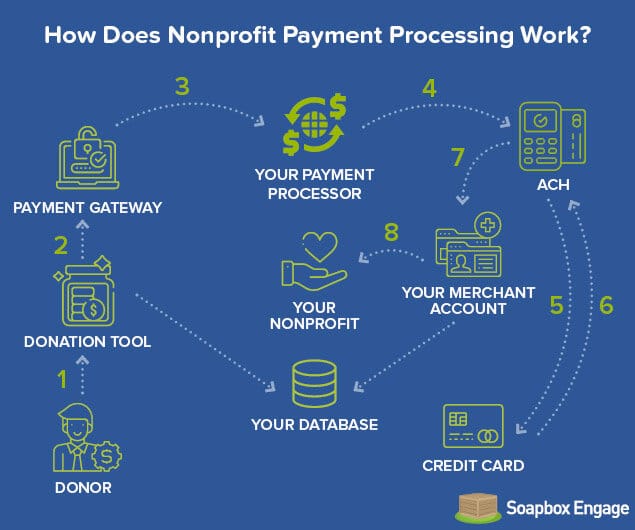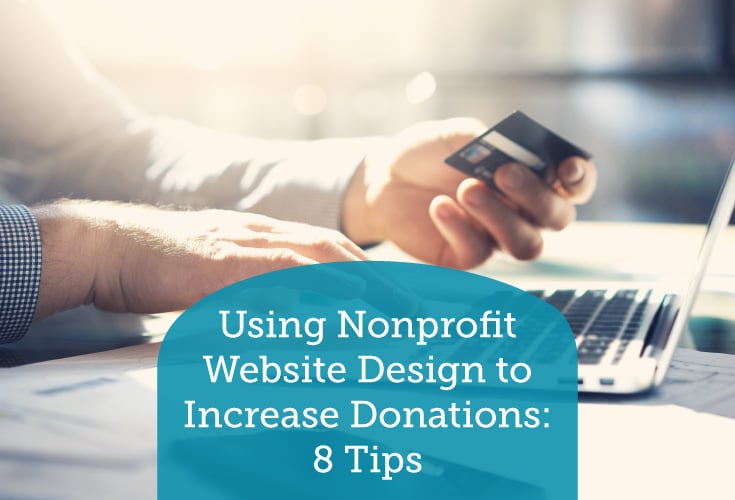
Nonprofit website design is about far more than making your nonprofit look good online. Good design not only gives your nonprofit a more professional image, but it also makes it easier for supporters to learn about and get further involved with your organization. Great design can even help you get more donations!
After all, online giving grew 21% in 2020, showing that there is ample opportunity for nonprofits to step up their web design game and secure the funds needed to help fund their mission. Ready to use your website to get more donations? Here are our eight tips to help you do just that:
- Keep site navigation simple
- Consistent branding is key for a nonprofit website
- Show your donors their impact
- Mobile optimization matters
- Make sure your donors know your site is secure
- Make it easy for donors to find matching gifts
- Don’t forget your confirmation pages and receipts
- Last, but certainly not least: Keep it simple
If you’re ready to raise more online than you ever have before, let’s get started!
1. Keep site navigation simple
Put yourself in your supporters’ shoes. No one wants to feel like they’re on a scavenger hunt when they’re trying to find out more about your nonprofit. They especially don’t want to have to hunt to find your donate button.
Make it easy for them by using a simple navigation format that keeps your “donate” button prominently featured on your website. If you choose a dropdown-style navigation, you’ll want to keep the menu to one level to avoid burying pages. You should also try to limit your main navigation links to 2-3 words per item.
If you really want to keep things simple for your readers—and make it even easier for them to donate—use a sticky navigation. This just means that your navigation is locked in one fixed place and moves with the reader as they scroll. That way, when your reader scrolls down to find your compelling client testimonials, it will be that much easier for them to take the next step and give!
2. Consistent branding is key for a nonprofit website
Did you know that donations made on a branded donation form are, on average, 38% larger than contributions made through a generic PayPal page? It’s true! In fact, branding is even more important when it comes time for that ever-so-important second donation when donors are nearly 70% more likely to make another contribution if the first contribution was made through a branded form.
One of the most important steps you can take to ensure consistent branding is to create a style guide to direct your website design, as well as other marketing activities. This style guide should include notes on chosen fonts and font sizes, preferred color palettes, approved logos, spacing, and other visual guidelines that are unique to your nonprofit. Once you have your style guide in place, it will be that much easier to keep your branding consistent across your website, social media accounts, email campaigns, and more.
3. Show your donors their impact
Donors want to know that their dollars are making an impact, and they like to see that impact in action. How can you show this? It’s easier than you think!
You can feature testimonials and quotes from real-life clients on your home page, and include case studies on your blog. Infographics can be created using tools like Canva or Venngage, and these are perfect for showing longer-term impact on a monthly or annual basis.
Images and videos are another perfect way to show impact. In fact, 57% of people who watch a nonprofit video go on to make a donation.
Finally, don’t forget tone when conveying impact. Keep all content donor-centric, meaning using “you” language instead of “we” language to show that you understand the importance of your donors.
4. Mobile optimization matters
Over half the people who visit your website do so on a mobile device, and that’s reason enough to make sure your website is mobile-optimized. So is the fact that Google has been prioritizing mobile-friendliness in search engine results for years.
But what if I told you mobile-responsive donation pages actually yield 34% more donations? I’d bet you’d be jumping at the chance to make a few tweaks!
Luckily, the changes you need to make to mobile-optimize your website are not complicated. And, once you get the guidelines down, they’ll simplify your online presence, which saves both you and your supporters time in the end!
5. Make sure your donors know your site is secure
The internet is rife with security issues, and most of us have had our card information stolen online at least once by now. However, that doesn’t mean there aren’t things you can do to both protect your donors and help them feel more secure.
First, start by using a secure web page. How can you tell if your site is already secure, you ask? Just take a look at your URL. If your URL starts with https:// accompanied by a padlock symbol, then you’re already using a secure form!
Missing the extra ‘s’? Check out these tips from Google!
You can further instill confidence in your donors by including the logo of the company that secures the form on the donation page. For example, Qgiv users have probably noticed the Digicert logo at the bottom of their online donation forms. This shows that the form is protected and that the personal and financial info entered on the form is collected safely.
6. Make it easy for donors to find matching gifts
An estimated $4 – $7 billion in matching gift funds goes unclaimed every year, and there is a very simple fix you can make to help your nonprofit get more of those funds to support your mission.
All you have to do is add matching gifts to your online donation form! If you’re a Qgiv user and already have Double the Donation, HEPdata, or Cyber Grants as a matching gifts partner, you can simply toggle matching gifts on in the back end, and you’ll be good to go.
7. Don’t forget your confirmation pages and receipts
Confirmation pages and receipts are some of the most neglected real estate in the digital nonprofit landscape. While confirmation and donation receipts have the practical purpose of confirming to your donor that their donation has gone through, there is so much more they can do!
You can use them to convey the impact of the received donation, and you can also help donors get more involved with your organization, whether that’s by encouraging them to follow you on social media, or by including details for a fun, upcoming event. You can even encourage donors to become volunteers by linking to your volunteer sign-up form!
8. Keep it simple
If your website is clunky and cluttered, it will appear outdated, which will have an impact on your ability to engage your supporters and collect those much-needed donations. Really! Three-quarters of young donors have said they’re turned off by out-of-date websites.
So when it comes to your website, remember the adage that less is more! Display only the copy and images that are relevant to conveying your current message. Even then, leave some “white space” around important elements.
You can also keep your website clean and simple by choosing images that communicate impact (and leaving out excess images that serve no purpose), by saying no to auto-playing videos or audio, and by limiting your website to one main call-to-action.
Those are our top eight tips for using nonprofit website design to increase donations. Want to see these tips in action? Check out these interactive donation form templates to help you visualize how updating your online donation form can help you attract more donors to support your mission.
And if you need some inspiration, never fear! Check out these 23 amazing nonprofit websites to see how real-world nonprofits are creating powerful websites that support their mission.
About the Author
Candace Kassman is the Digital Marketing Manager at Qgiv, a company that’s dedicated to building powerful fundraising tools that empower nonprofits to achieve their mission. She’s been involved in nonprofit marketing for over a decade and helping nonprofits achieve their fundraising goals is one of her passions.





